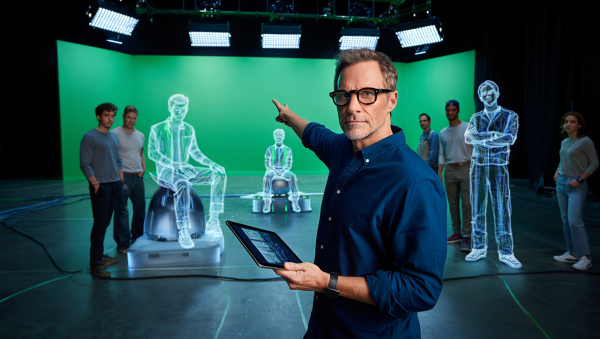
Core Points from the “Critterz” Rundown
Sep 30. 2025
• Budget/time compression: Instead of 3 years and $150–200M, OpenAI aims for a 9-month animated feature under $30M.
• Toolchain shift: GPT-5, combined with image models, handles the heavy lifting; humans simply supply sketches and voices.
• Cultural milestone: This isn’t hidden AI in the pipeline; it’s openly branded as AI-made, gunning for Cannes 2026.
• Hybrid model: It still requires human voices and some sketches, but the backbone is automated.
• Historical parallel: Mirrors how CGI’s cost plummeted from Terminator 1’s expensive breakthrough shots to today’s cheap plug-ins.
Digging Deeper
What Critterz signals isn’t just one cheaper cartoon; it’s a rupture in the whole Hollywood cost structure. For decades, the moat around studios wasn’t just talent; it was capital. You needed mountains of it to fund armies of animators, rendering farms, script doctors, storyboarders, and VFX labs. That moat is drying up.
OpenAI’s move reframes the economics: storyboarding is reduced to a prompt, animation pipelines are collapsed into generative sequences, and rendering is handled on the fly. The “3-year/$200M barrier” that justified gatekeepers’ power may dissolve into “9 months/$5M if you’re scrappy.”
Hollywood’s old model was built on scarcity: scarce cameras, scarce sound stages, scarce effects. AI flips that to abundance. When abundance collides with prestige industries, jobs vanish, guilds panic, and hierarchies crumble.
The End of Actors and Beyond
Actors survive here only as voices, and even that’s temporary. Once text-to-speech and emotional cloning cross the uncanny valley, studios (or more likely, individuals at home) won’t need them either. If CGI’s drop in cost shattered the line between blockbuster and indie, AI’s plunge in cost will erase it completely.
This means:
• Studios shrink. The machinery of “hundreds of millions per picture” becomes obsolete.
• Guild jobs vanish. Not just actors; compositors, lighting artists, junior animators, and even editors.
• Talent decentralises. The next Pixar may be a teenager in Manila or Lagos with a gaming laptop.
Historical Echo: CGI’s Crash in Price
Think of the leap: Terminator 1 spent millions to produce a few jagged CGI shots in 1984. By 1999, a college kid could experiment with Blender. By the 2010s, CGI was readily available off the shelf. The gap between impossible and trivial collapsed in a single generation.
AI film pipelines are walking the same arc—but at 10x the velocity. What cost $200 million in 2020 might cost $ 20,000 in 2030.
The Future: A Kid with a Laptop
Soon, the $300M franchise film becomes a category error. A 16-year-old with skill, taste, and AI pipelines could produce a feature that rivals or exceeds studio output. The long tail of imagination opens.
But here’s the sting: when everyone can do it, what is “special”? The flood will wash out mediocre work. Survival hinges on originality, curation, and psychological grip—power shifts from studio to storyteller.
Okay, so here’s the deal with economics: the old advantages studios had are disappearing fast. Studios used to be valued based on how well they spent money, but that idea is dying as AI makes filmmaking way cheaper. Think about it: a $150-200 million movie could cost less than $30 million with AI and have the same quality. That means studio values will probably drop, and they’ll focus more on computers and a small team of creative people instead of huge crews and studios. A small company making three movies for $8-12 million each could make money just by selling one license – no need for a box office hit. Streaming is getting tougher too: if ads bring in $18-35 per thousand views, shows have to keep people watching to justify their cost. A ton of content isn’t as important as people being able to find good stuff. Insurance for movies will change, too: they’ll need proof of where data came from (licensed sources), checks to make sure models aren’t changing, and that no one’s stealing intellectual property.
If you can’t prove it, you don’t get paid. For labor and legal stuff: getting consent is now super important. You can’t just use someone’s digital copy without permission and paying them royalties, and actors need to be able to stop their likeness from being used later. Studios will try to find legal loopholes, but the big streaming platforms will force everyone to prove where content came from – the models, voices, everything – or they’ll get buried. As for how movies are made: creative people are the most important part. The process looks something like this: beat sheet = storyboard with AI = basic 3D with voices = professional voice with emotion control = making sure it all makes sense = final touches. Problems? Look out for lip-sync issues, dead emotions, and plot holes. Fix it by testing it and checking the story. Cost is changing from per frame to per minute of believable emotion. Scripts and editing are now the hardest parts.
For getting movies out there: that’s the last real advantage. Film festivals will want to know if AI was used and who owns the rights. The rules will be weird at first, but they’ll change when a small team wins over the audience. Platforms are the new studios – they care about views and staying out of legal trouble. The way to stop bad content from flooding the market – labels that show what’s real, limits on recommendations, trust scores for channels – will decide what gets made. Who decides what’s good is key: brands that don’t waste your time will get the clicks. Here’s what could happen: Worst case – old studios struggle with their debts, ad prices drop, subscriptions stop growing, and investors get angry. Neutral – smaller companies win, studios focus on marketing and buying finished movies. Best case – creators make money like investing in a bunch of small stocks: small investments, big wins, and clear rules for royalties. The main point is: costs are dropping. AI makes it cheap to make movies, so being a creative person is super important. Prove who gave permission, show where everything came from, ship it on time, and don’t bore people – your laptop is now a studio.











